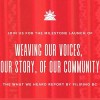A Better Future for Filipino Canadians?
A Better Future for Filipino Canadians?
The past decade under the Conservative Party of Prime Minister Stephen Harper was not good for Filipino immigrants. Although Canada accepted more Filipinos during that period the Harper government drastically changed immigration policies by accepting more temporary migrants rather than permanent residents. This was done through the Live-in Caregiver Program (LCP), the Provincial Nominee Program (PNP) and the Temporary Foreign Workers Program (TFWP).
Before the Harper administration, Canada regarded immigration as a means of enhancing Canada’s efforts towards nation building. Thus, immigrants were seen as important contributors to the country’s multi-cultural mosaic. Under the Harper regime, however, immigrants were viewed as temporary workers accepted to occupy low skilled and low paying jobs that ordinary Canadians do not want. They were needed but not necessarily wanted as permanent residents or citizens.
Because of the Harper government’s focus on bringing in temporary workers, it reduced the number of permanent residents selected according to the point system and also close family members under the family reunification program. The number of caregivers admitted annually was also reduced and the processing of their applications for permanent residence after two years as live-in was significantly delayed. Instead, the government accelerated the entry of temporary workers to work in service sector jobs in companies like McDonalds and Tim Horton’s where their chances of becoming permanent residents depended on the pleasure of their employer, making them vulnerable to abuse.
The recent victory of the Liberal Party under Prime Minister Justin Trudeau promises to change the negative policies and programs of the Harper regime. PM Trudeau has announced that the multicultural policies adopted during his father’s administration will be restored. That means more permanent residents, including those coming under the family reunification program will be accepted. The processing of the applications for permanent residence by live-in caregivers will be accelerated by allocating more funds to the agencies handling these. The in-migration of foreign temporary workers will be reconsidered to avoid the exploitation of workers from less developed countries.
Since the mid-1960s, the number of Filipinos in Canada has increased from only 770 to more than 800,000. Filipinos have surpassed South Asians and the Chinese in numbers as the most numerous recent immigrants to Canada. Unfortunately, because of the negative policies and programs adopted by the Harper regime, the socio-economic situation of Filipino migrants who came in during the Harper years has been adversely affected. Statistics show that 50% of the total Filipino population in Canada arrived between 2000 and 2015 mostly as lowly temporary workers. Thus at present, many Canadians see Filipinos as nannies, labourers and low skilled service sector workers. Hopefully, the more positive policies of the Liberal government under PM Trudeau will prevent Filipinos from becoming
 Canada
Canada








